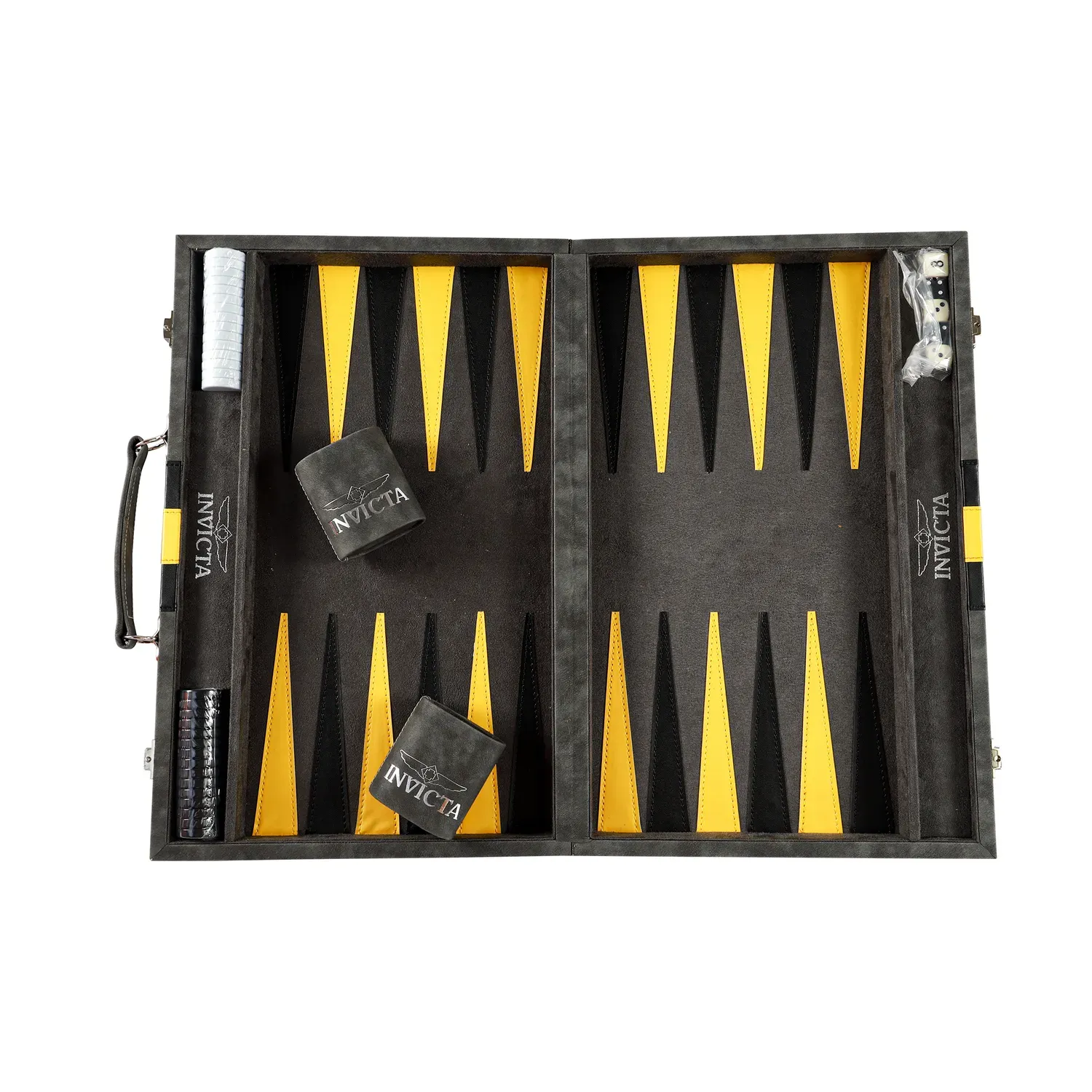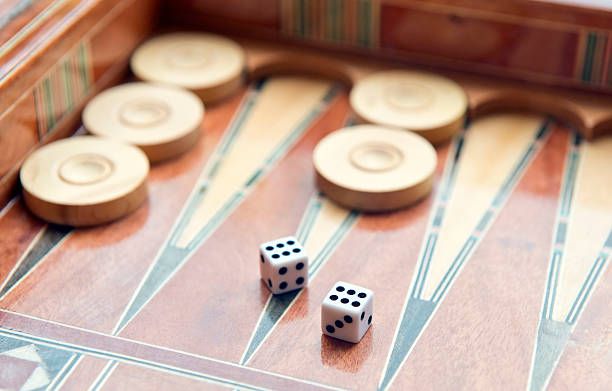
Get A Quote
What is the Dead Cube Rule in Backgammon?
Backgammon is one of the oldest known board games, dating back nearly 5,000 years. This timeless game of strategy and luck has fascinated players from diverse cultures and backgrounds. One of the key elements that add complexity and excitement to backgammon is the doubling cube. However, not all players are familiar with the intricacies of the "dead cube rule" in backgammon. This blog will dive deep into what the dead cube rule in backgammon is, how it impacts the game, and why understanding this rule is essential for both novice and seasoned players.
Understanding the Basics of Backgammon
Before we explore the dead cube rule, let's briefly review the basics of backgammon, a classic game played with a backgammon set. It's a two-player game where each player has 15 checkers that move around a board based on the roll of two dice. The objective is to move all your checkers into your home board and then bear them off (remove them from the board) before your opponent does.
The Doubling Cube: Adding a Twist to the Game
The doubling cube is a unique feature in backgammon, adding a layer of strategic depth. It is a six-sided cube with the numbers 2, 4, 8, 16, 32, and 64. At the beginning of the game, the doubling cube is placed in the center of the board with the number 64 (representing 1) facing up.
During the game, a player can propose to double the current stakes. If the opponent accepts, the game continues with the stakes doubled. If the opponent declines, they forfeit the game at the current stakes. Once the doubling cube has been used, only the player who accepted the last double can offer the next double, often referred to as having "possession" of the cube.
What is the Dead Cube Rule in Backgammon?
Now, let’s delve into the core topic: the dead cube rule in backgammon. This rule comes into play under specific conditions and can significantly influence the game's outcome.
Definition and Conditions of the Dead Cube Rule
The dead cube rule in backgammon refers to a situation where the doubling cube, once offered and accepted, can no longer be used to propose further doubles for the remainder of the game. This typically happens when one player holds a substantial lead, making any future doubles meaningless because the trailing player has no realistic chance of winning.
For instance, if a player offers a double when they are on the verge of winning and the opponent accepts, the game may proceed in such a manner that the possibility of the trailing player making a comeback becomes negligible. In this case, the doubling cube is considered "dead" because no subsequent doubling can affect the game's stakes or outcome.
How the Dead Cube Rule Impacts Gameplay
Understanding the dead cube rule in backgammon is crucial for strategic decision-making. Here’s how it influences the game:
- Strategic Doubling: Players must be cautious when offering or accepting a double, especially when they are far ahead or significantly behind. A well-timed double can pressure the opponent, but an ill-timed one can render the doubling cube useless.
- Game Dynamics: The dead cube rule can change how players approach the game, particularly in the endgame. When the cube is dead, the focus shifts solely to bearing off checkers efficiently.
- Psychological Play: Knowing when the cube might become dead can be used as a psychological tactic. Players can leverage this understanding to make calculated risks, bluffing opponents into accepting or declining doubles based on perceived chances.
Why is the Dead Cube Rule Important?
The dead cube rule in backgammon might seem like a minor detail, but it plays a significant role in high-level play. Here's why it's important:
Enhancing Strategic Depth
Backgammon is not just a game of luck; it is a game of deep strategy. The dead cube rule adds another layer of complexity, requiring players to think several moves ahead. Mastering this rule can give players an edge over their opponents, allowing them to maximize their winning potential and minimize losses.
Balancing Risk and Reward
The dead cube rule forces players to weigh the risks and rewards of their actions more carefully. Offering a double at the wrong time can backfire, while declining a double could mean missing out on potential gains. Understanding this rule helps players make more informed decisions, balancing aggression with caution.
Competitive Advantage
In competitive backgammon, where players are often evenly matched, knowledge and application of advanced rules like the dead cube rule can be the difference between victory and defeat. Experienced players use this rule to their advantage, gaining a competitive edge in tournaments and high-stakes matches.
Practical Tips for Applying the Dead Cube Rule
To effectively utilize the dead cube rule in backgammon, players should consider the following practical tips:
Assess the Board Position
Before proposing or accepting a double, carefully assess the board position. Consider the likelihood of winning given the current state of play. If you are far ahead, think about how the dead cube rule might affect the remaining game. If you are behind, evaluate whether accepting the double is a reasonable risk.
Monitor the Game's Progress
Keep track of the game's progress and anticipate potential turning points. The dead cube rule often comes into play during the endgame, so be especially vigilant as you approach this phase. Recognize when the cube might become dead and adjust your strategy accordingly.
Use Psychological Tactics
Leverage the psychological aspect of the dead cube rule. Use your understanding of this rule to bluff or pressure your opponent. Sometimes, the mere offer of a double can unsettle your opponent, even if the cube is likely to become dead.
Study Advanced Strategies
To truly master the dead cube rule, study advanced backgammon strategies and learn from experienced players. There are numerous resources available, including books, online tutorials, and backgammon clubs, where you can deepen your understanding of this and other complex rules.
Conclusion
The dead cube rule in backgammon is an essential concept that can significantly impact the outcome of a game. By understanding what the dead cube rule is, players can make more informed decisions, enhance their strategic play, and gain a competitive edge. Whether you're a beginner or an experienced player, mastering this rule will elevate your backgammon skills and increase your enjoyment of this timeless game.
Backgammon's rich history and strategic depth continue to captivate players around the world. The dead cube rule, while nuanced, is a vital part of the game's strategic fabric. By incorporating the insights from this blog, you'll be better equipped to navigate the complexities of backgammon and achieve success on the board. So, the next time you pick up the dice, remember the dead cube rule and let it guide your path to victory.
For those passionate about backgammon and other classic board games, Pinkstore is your go-to source for high-quality, bulk board games. Whether you're looking to stock up for a game night, a community event, or your store, Pinkstore offers an extensive selection of games at competitive wholesale prices. Visit Pinkstore today to explore our wide range of board games and enhance your collection with top-quality products that bring people together through the joy of gaming.


